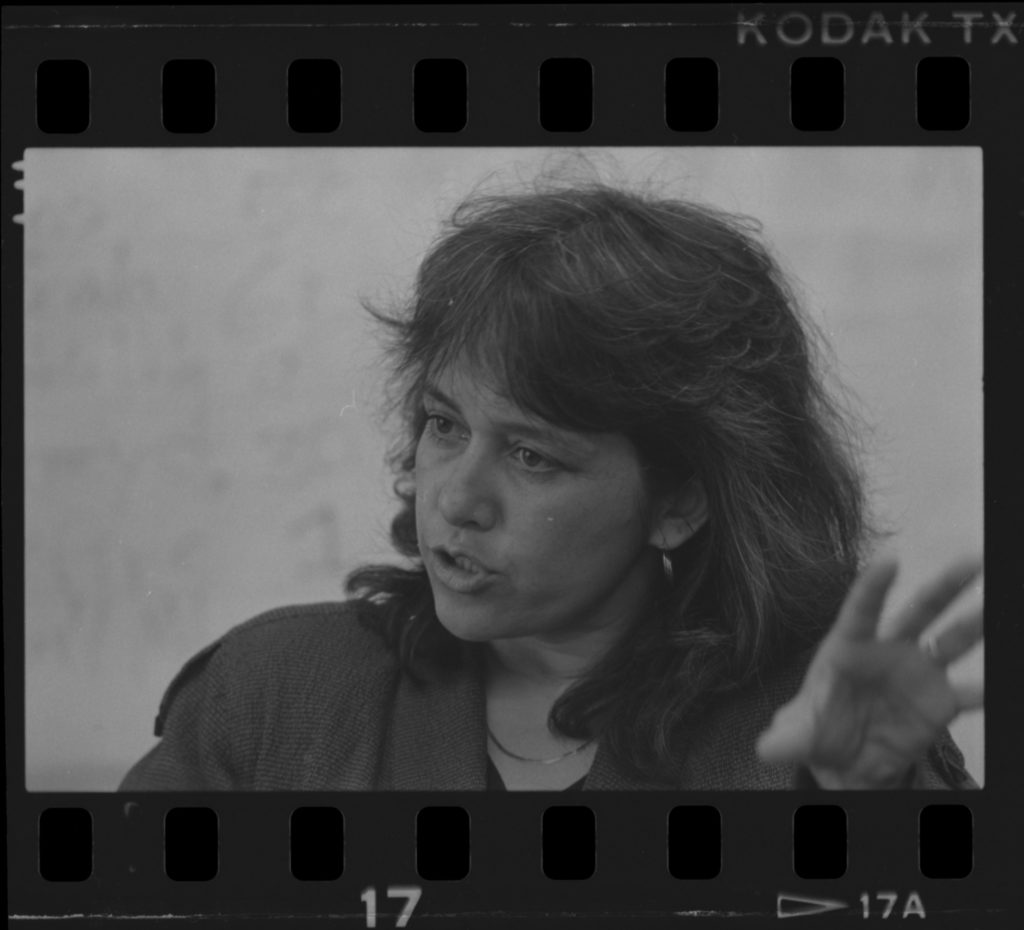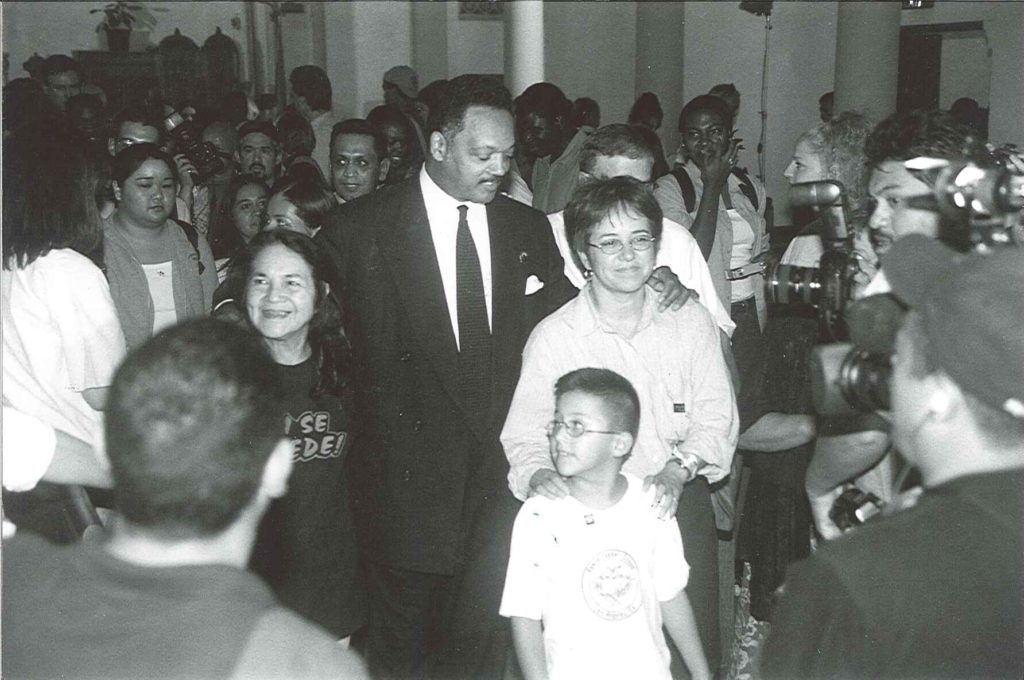Maria Elena Durazo recalls her first organizing job
On a trip to Mexico I met Cristina Vázquez and others from the International Ladies’ Garment Workers Union (ILGWU or ILG, now Workers United-SEIU). And when we came back, Cristina referred me to the union for a job. I was already familiar with the work of the ILG at that point. It was the only union that was openly, aggressively organizing immigrants. They were doing things like challenging the INS for raiding the factories without arrest warrants. In conjunction with its aggressive program of organizing workers in the shops, the ILG also had a legal program that backed it up to push the INS out of the shops. Because ultimately, as long as they continued with those raids, it was gonna be pretty much impossible to organize. So I just loved the fact that they were so bold and they were out there on the front lines in a vanguard position.

The ILG was “willing to break with the traditional way of looking at immigrant workers.”
Once I got to know Cristina I saw the way that the ILG approached organizing. It was very experimental in the sense that the organizers were given the freedom to organize anyway they liked. “Figure it out, do whatever you can. Be creative!” They were almost, in a sense, given carte blanche, instead of, “This is the way, and this is the only way.” All those elements made the ILG even more appealing to me.
Continue reading “They were willing to break with tradition”
